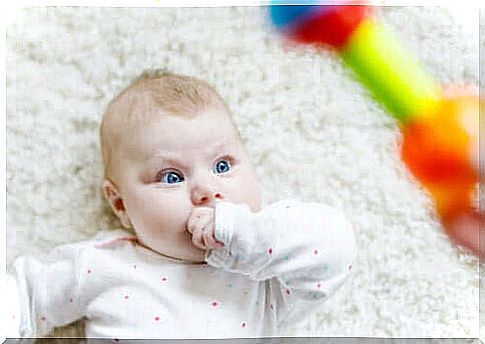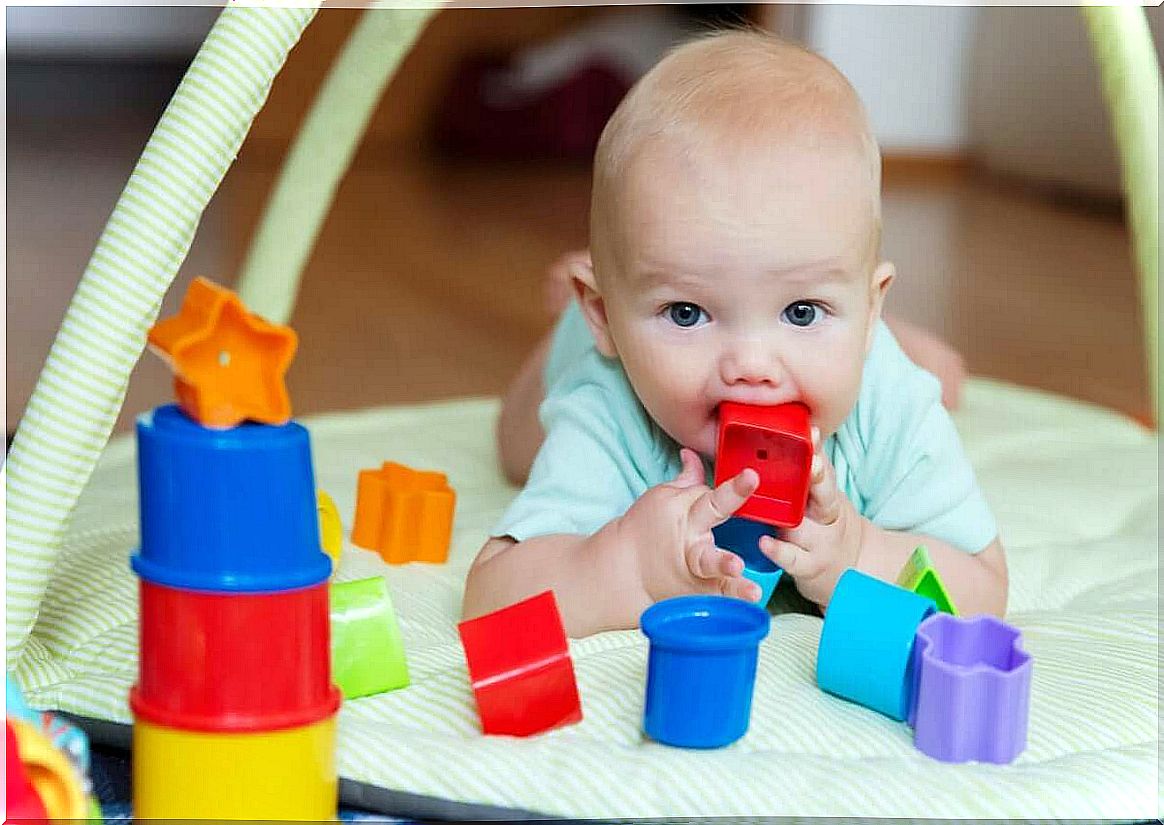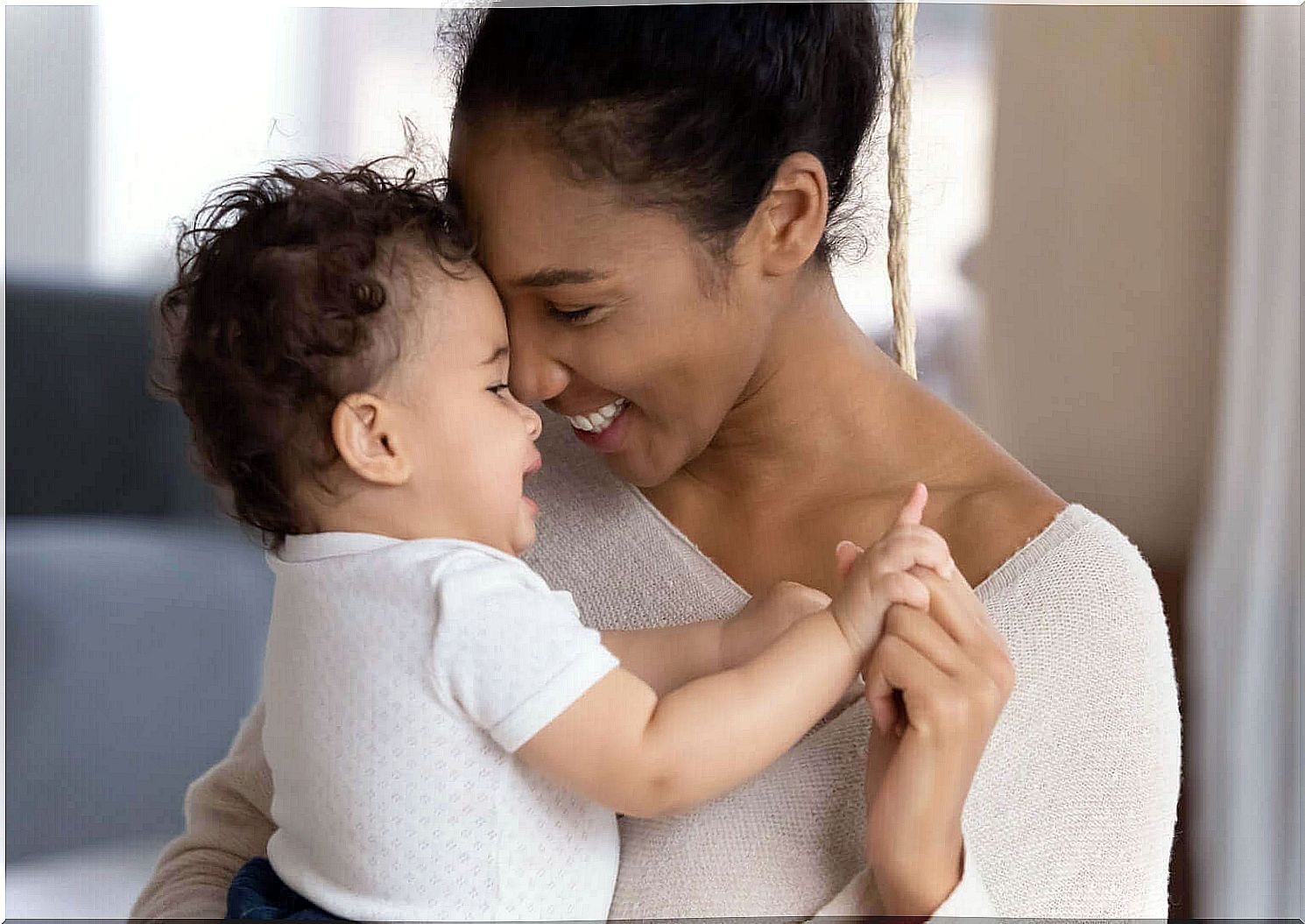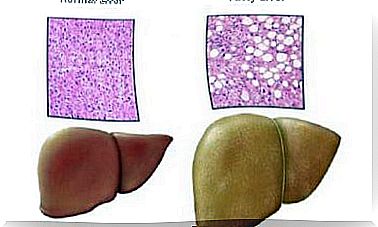Why Do Babies Look At Things?

Babies look at things to understand them. Their memory works to internalize the information later in their brain. Find out more about it by reading today’s article.
For babies, the world is a completely new place that they discover with their senses. Babies stare at a person or object because it moves, dances, is bright, or changes before their eyes.
They follow it with their eyes until some other fascinating object appears in front of them. Items that are normal for adults turn out to be extremely interesting for children.
When their eyes see a shadow or light, they begin to stare at it. Adults have already managed to assimilate such impressions and include them in their repertoire, which is why they are surprised by few things. But for babies, a colorful carousel hung over their cradle can become the whole world.
The little ones are like sponges. They “absorb” reality and create connections. Countless sensations shape their emotional, bodily, and motor responses, which they use from birth to interact with others.
The Spanish Association of Pediatricians has created a “Practical Guide for Parents” which can prove helpful at this stage of intensive learning.
How does a child’s eyesight develop?
Children’s brains are extremely plastic. Experts recently understood the ability of nerve cells to adapt to their environment. By connecting with other neurons, they recognize them through their senses without resorting to words.
Babies are born with amazing learning skills. The development of their eyesight is related to their motor and neurological development. During the first three months of their life, babies stare, stare, and gaze upon lights or objects that may come into their field of vision.
From three to five months of age, they see their hands, play with them, and play with the toys around them. From 9 to 12 months of age, they touch and play with objects they recognize. The retina matures from 6 to 11 months of age. From the age of 3 to 6, the visual abilities of children mature.

Why do babies look at something or someone?
Babies are staring at something because their attention is drawn to movement. The neuronal dynamics of babies can only be compared with the plasticity of the world that appears before their eyes.
Objects that move
Moving objects are very interesting for babies. Experts recommend using cells primarily to stimulate babies.
Make sure the items you place in front of your baby are in front of and close to him, moving in a semicircle but not too fast. The idea is to engage his eyesight by using the mobility of the eyeball that plays a key role in the development of vision.
Shining items or items that are glowing
Stains of light and shadows also catch the eyes of children. They focus their eyesight on the contours of shapes and silhouettes as they do not cause visual discomfort or irritation.
Babies love details that they observe with interest and touch with their hands and fingers. For example, a daddy’s mustache and beard can be extremely interesting to a toddler.
Babies are interested in colors
Vivid colors and black and white contrasts catch the eyes of babies. However, make sure you don’t overstimulate your baby as you may exhaust him.
If your baby is tired, he will suddenly start to change his eyesight. Playing soft music in a room can be accompanied by a synesthesia of colors, textures and shapes.
When objects and faces are harmonious
Experts believe that babies are looking at “beautiful” faces. However, you must remember that they are not aware of socially acceptable canons of beauty. Therefore, we believe that they are fascinated by delicate, harmonious, rounded and full shapes.
Familiar faces that recognize themselves make them feel safe, comfortable and protected.
When you may have cause for concern
The fact that a child is looking at something is not too much of a problem; it appears when the toddler looks empty at a given point and does not interact with his caregivers. While each child develops at his own pace, you need to watch out for the following signs:
- If your two-month-old baby is not looking at the person who is looking at him. Research has shown this to be an early sign of autism.
- If your three- to four-month-old baby does not follow the objects that move next to him with his eyes and does not smile at people who want to make eye contact with him.
- Lastly, if your 6-month-old baby is not trying to grasp objects that are within his reach or is not showing affection to his caregivers.
Such signs will certainly be accompanied by others, such as problems with psychomotor development, language problems or neurological disorders.
How you can help your child’s visual development

Visual stimulation is about emphasizing what you want your baby to see, feel and remember. Colors, movements and shapes support a child’s perceptual development and help him adapt to his environment.
Children are actively discovering new things. Associative mechanisms allow them to connect objects, impressions or people with different concepts. For example, care, food, protection, affection, rest, comfort and satisfaction.
You need to be aware that mirror neurons are a neurophysiological mechanism that plays a key role in children’s visual development. They are extremely important in taking action, understanding and imitating.
It turns out that as early as seven hours after birth, the newborn shows interest in his mother’s face and will quickly start imitating the expressions of his caregivers.
This is why when babies watch what someone in front of them is doing, they think they are doing the activities themselves.
Another process that we must not forget is the development of unconscious memory, which occurs when a child is about a year and a half. It allows them to unknowingly remember and store information.
They store the experiences of behavior and emotions expressed by their caregivers or evoked during play or in a specific situation.
It’s exciting when your baby is watching you!
You probably feel amazing when your child is watching you. During this amazing moment, your eyes are fixed on each other and you communicate your intentions and information. You communicate with each other.
From then on, the guardian finds out that he can show the child many things. This helps the toddler to start working on building his own personality.









